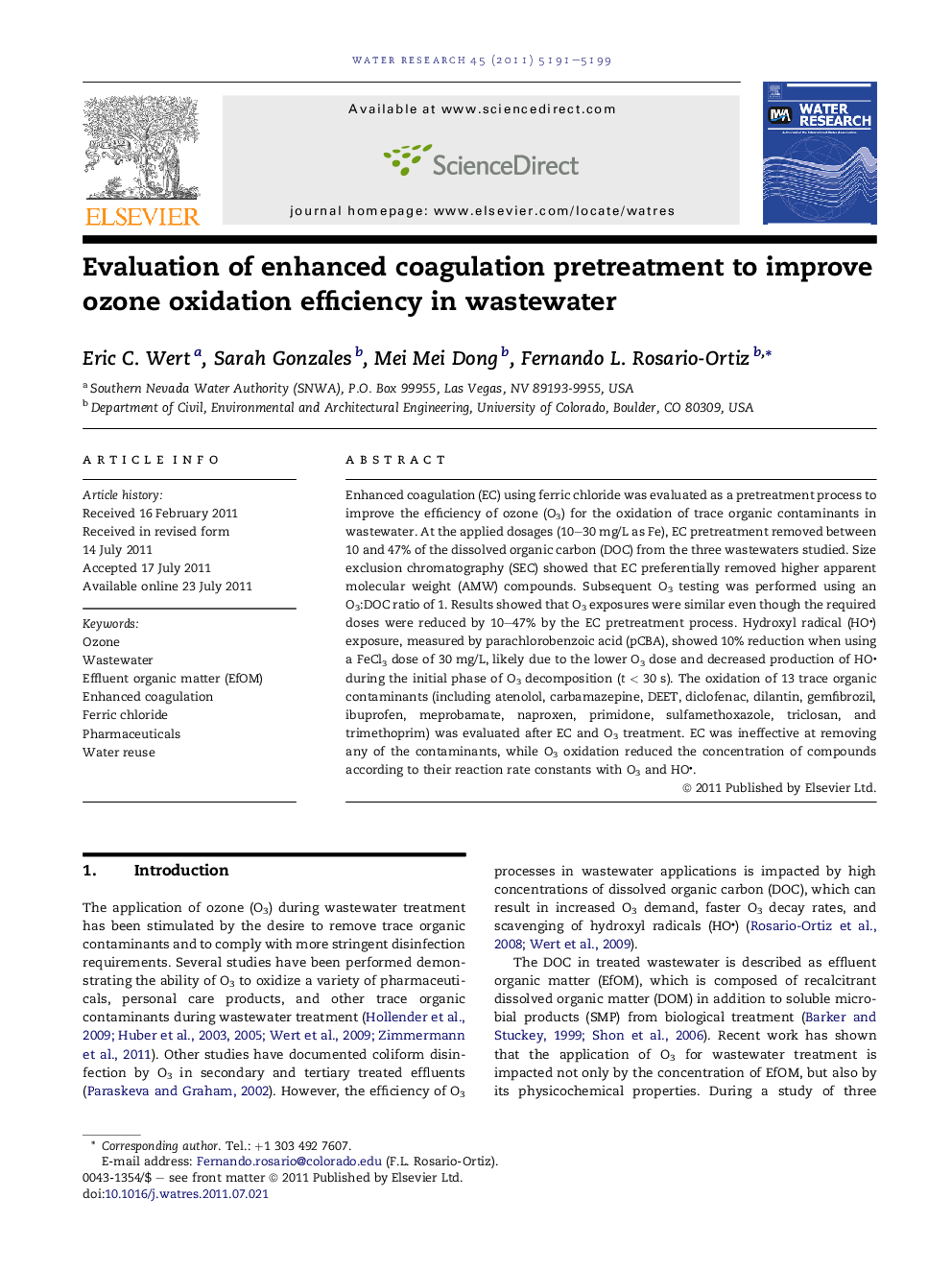| Article ID | Journal | Published Year | Pages | File Type |
|---|---|---|---|---|
| 4483087 | Water Research | 2011 | 9 Pages |
Enhanced coagulation (EC) using ferric chloride was evaluated as a pretreatment process to improve the efficiency of ozone (O3) for the oxidation of trace organic contaminants in wastewater. At the applied dosages (10–30 mg/L as Fe), EC pretreatment removed between 10 and 47% of the dissolved organic carbon (DOC) from the three wastewaters studied. Size exclusion chromatography (SEC) showed that EC preferentially removed higher apparent molecular weight (AMW) compounds. Subsequent O3 testing was performed using an O3:DOC ratio of 1. Results showed that O3 exposures were similar even though the required doses were reduced by 10–47% by the EC pretreatment process. Hydroxyl radical (HO) exposure, measured by parachlorobenzoic acid (pCBA), showed 10% reduction when using a FeCl3 dose of 30 mg/L, likely due to the lower O3 dose and decreased production of HO during the initial phase of O3 decomposition (t < 30 s). The oxidation of 13 trace organic contaminants (including atenolol, carbamazepine, DEET, diclofenac, dilantin, gemfibrozil, ibuprofen, meprobamate, naproxen, primidone, sulfamethoxazole, triclosan, and trimethoprim) was evaluated after EC and O3 treatment. EC was ineffective at removing any of the contaminants, while O3 oxidation reduced the concentration of compounds according to their reaction rate constants with O3 and HO.
► Enhanced coagulation using ferric chloride effectively reduced the dissolved organic carbon (DOC) concentration. ► The reduced DOC concentration decreased the ozone demand in three wastewaters. ► Ozone exposures were similar when evaluated based upon the same ozone:DOC ratio. ► Lower ozone dosages were required to achieve an equivalent degree of contaminant oxidation.
